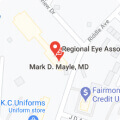
Understanding the Cornea
Prior to learning about the services, we offer to treat and repair corneal conditions. Therefore, it is a good idea to familiarize yourself with this part of the eye. The information below details what happens in this outermost layer of the eye. And, includes the common cornea diseases.
The cornea is the eye’s outermost layer. It is the clear, dome-shaped surface that covers the front of the eye. And plays an important part in the eye’s visual acuity. Corneal tissue consists of five basic layers. The epithelium, Bowman’s layer, stroma, Descemet’s membrane and endothelium. Although it is clear, it contains a highly organized group of cells and proteins. Unlike most tissues in the body, the cornea contains no blood vessels to nourish or protect it against infection. Instead, the cornea receives its nourishment from the tears and aqueous humor that fill the chamber behind it.
The cornea, one of the protective layers of the eye, serves two functions:
- First, along with the eyelid, eye socket, and sclera (white part of the eye), and the tear film, the cornea shields the eye from dust, germs, and other harmful matter.
- Second, as the eye’s outermost lens, it is the entry point for light into the eye. When light strikes the cornea, it bends or refracts, the incoming light onto the lens. The lens further refocuses the light onto the retina, a layer of light-sensing cells lining the back of the eye.
To see clearly, the cornea and lens must focus the light rays precisely on the retina. This refractive process is similar to the way a camera takes a picture. Moreover, the cornea and lens in the eye act as a camera’s lens would. The retina approximates the film. If it is unable to focus the light properly, then the retina receives a blurry image.
Corneal Diseases
Procedures Offered
What does the cornea do?
The cornea not only shields the eye from dust but also from germs and other harmful matter. Furthermore, it works together to protect the eye along with the eyelid, eye socket, sclera, and tear film.
As the eye’s outermost lens, it is also the entry point for light into the eye. When light enters, it bends or refracts the incoming light onto the lens and refocuses light onto the retina.
The retina contains a layer of light-sensing cells lining the back of the eye. To see clearly, the cornea and lens need to focus light rays precisely on the retina.
How does it work?
Besides allowing the light to enter the eye, the cornea has another critical function. It provides up to 75 percent of the focusing power of the eye.
The rest of your eye’s focusing power is provided by the lens. Which is located directly behind the pupil. If someone is nearsighted, farsighted, or has astigmatism, the cornea’s curvature is not optimal.
However, presbyopia, or farsightedness due to aging, is due to a change in the lens behind the pupil. When this happens, it’s because the lens loses its flexibility.







